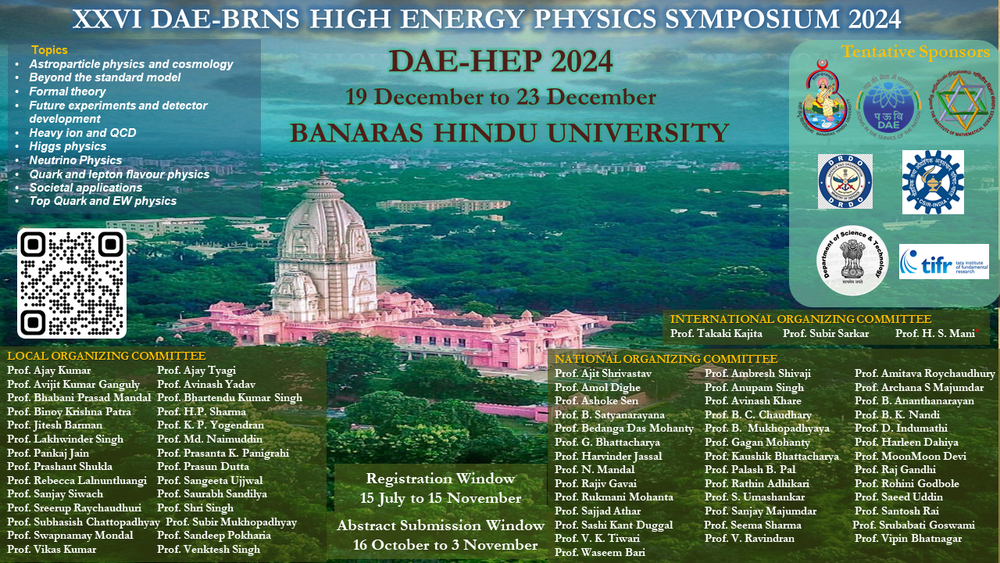Speaker
Description
Angular distributions of heavy hadronic decays can serve as valuable observables for testing the Standard Model and identifying potential signals of new physics. In cases where new physics (NP) effects are not apparent in branching ratios or are obscured by hadronic uncertainties, these effects may still be detectable in the angular distributions.
In our study, we focus on the $b \to c$ and $b \to s$ channels, where several observations already suggest possible deviations from the Standard Model. We analyze the angular distributions in $\Lambda_b \to \Lambda_c(\to \Lambda \pi) \tau \bar\nu_\tau$ and $B \to K^{*0} \tau^+ \tau^-$ decays and identify observables sensitive to NP contributions. Our focus is particularly on observables that could reveal deviations in the relations among Wilson coefficients within the low-energy effective field theory (LEFT), as predicted by the $SU(2)_L \times U(1)_Y$ invariance of the Standard Model Effective Field Theory (SMEFT). Both decay modes we discuss involve tau leptons in the final state, making experimental reconstruction challenging.. To address this, we propose a comparative analysis of the experimental sensitivities and NP search potentials between angular observables reconstructed from the tau distribution and those reconstructed from the muon distribution arising from the tau decays.
| Field of contribution | Phenomenology |
|---|

